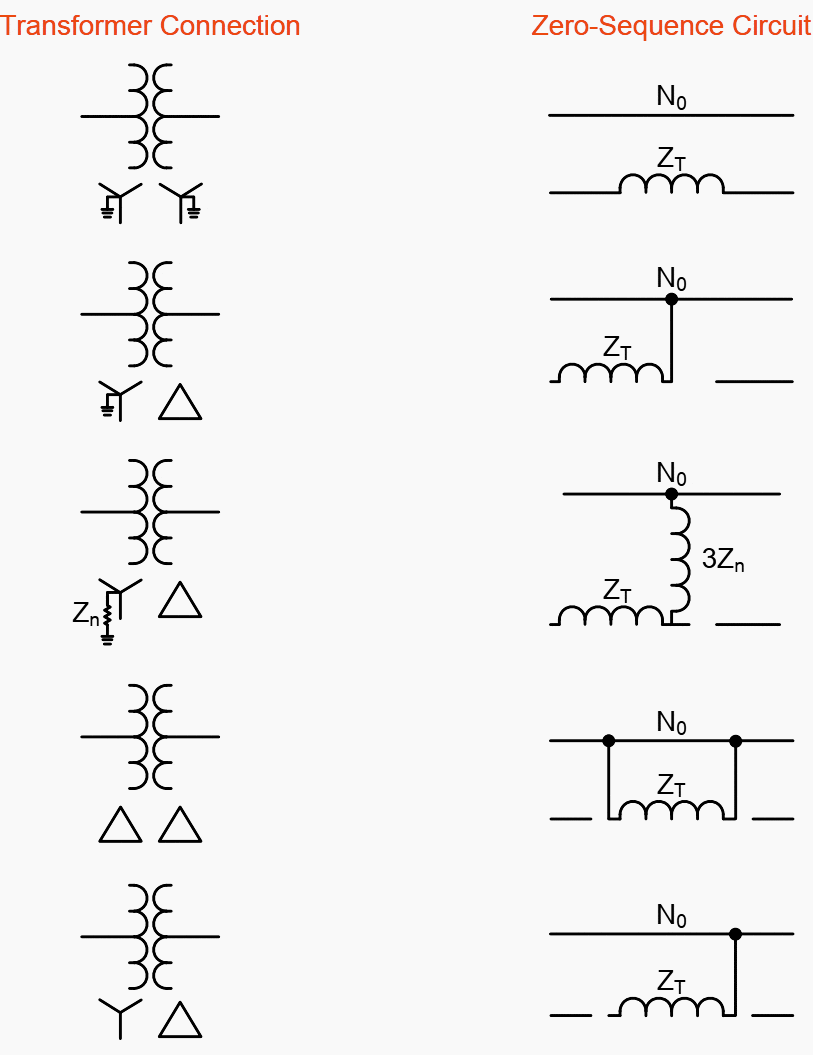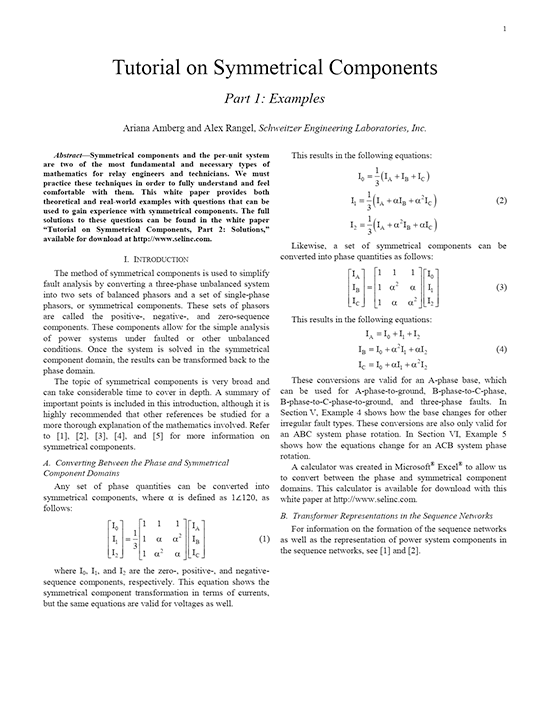Introduction to symmetrical components
The method of symmetrical components is used to simplify fault analysis by converting a three-phase unbalanced system into two sets of balanced phasors and a set of single-phase phasors, or symmetrical components. These sets of phasors are called the positive-, negative-, and zero-sequence components.

These components allow for the simple analysis of power systems under faulted or other unbalanced conditions. Once the system is solved in the symmetrical component domain, the results can be transformed back to the phase domain.
The topic of symmetrical components is very broad and can take considerable time to cover in depth.
A summary of important points is included in this introduction, although it is highly recommended that other references be studied for a more thorough explanation of the mathematics involved.
Transformer Representations in the Sequence Networks
For information on the formation of the sequence networks as well as the representation of power system components in the sequence networks.
Figure 1 shows some common transformer connections and the equivalent zero-sequence representations. For a complete list of transformer connections.

Connecting the Sequence Networks
Once the sequence networks for the system are defined, the way they are connected is dependent on the type of fault. Sequence net work connections for common shunt fault types are shown in the remainder of this subsection.
| Title: | Tutorial on Symmetrical Components. Part 1: Examples; Part 2: Answer Key – Ariana Amberg and Alex Rangel, Schweitzer Engineering Laboratories, Inc. |
| Format: | |
| Size: | 742 KB |
| Pages: | 29 |
| Download: | Right here | Video Courses | Membership | Download Updates |



MY EXPERIENCE IS SUBSTASIONS 115, 230, 400 KV
Your articles are meaningful and educative
I like your articles. They are very meaningful and educative
I am works this substation from beginning to end by Siemens.